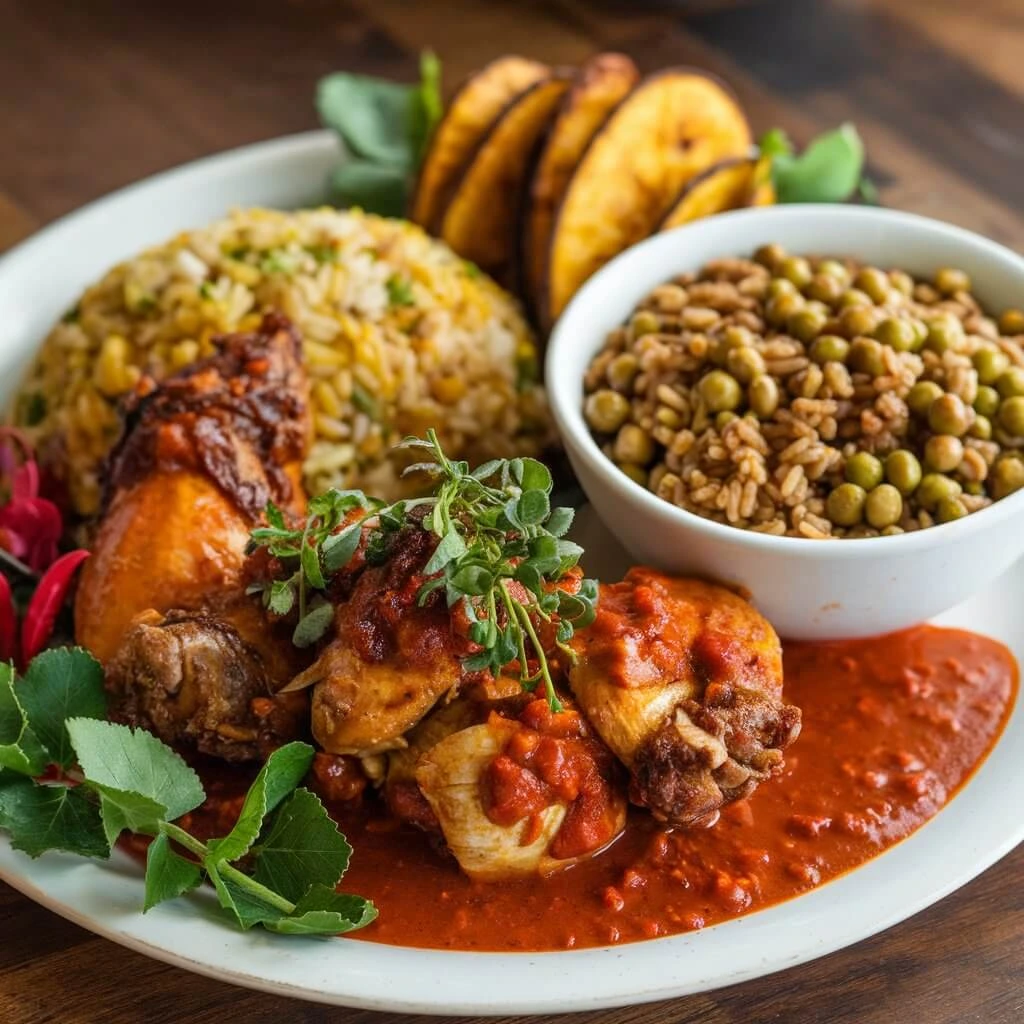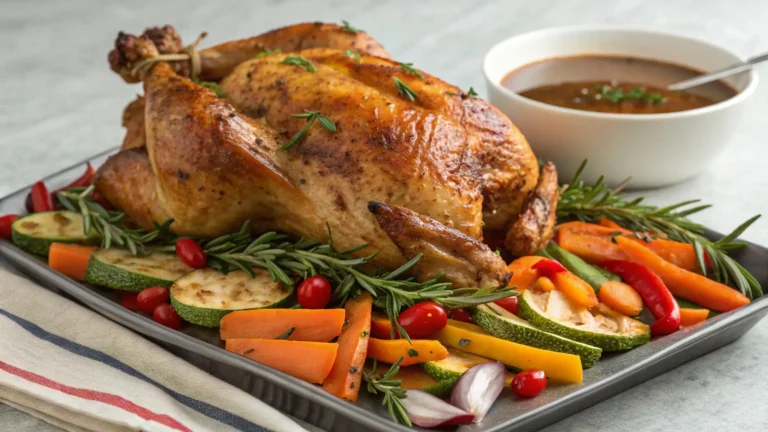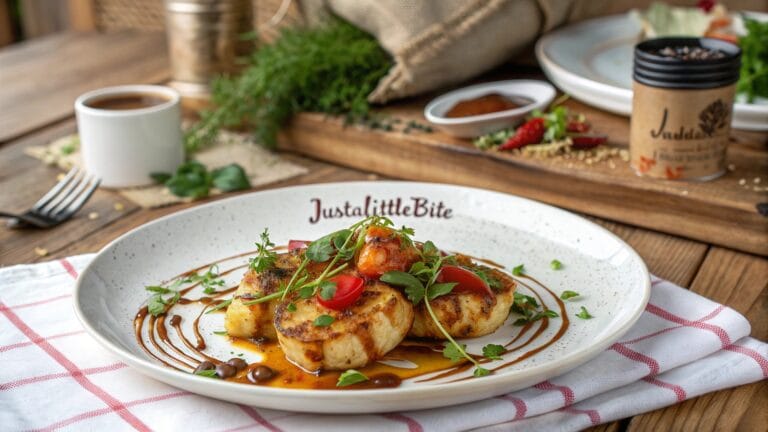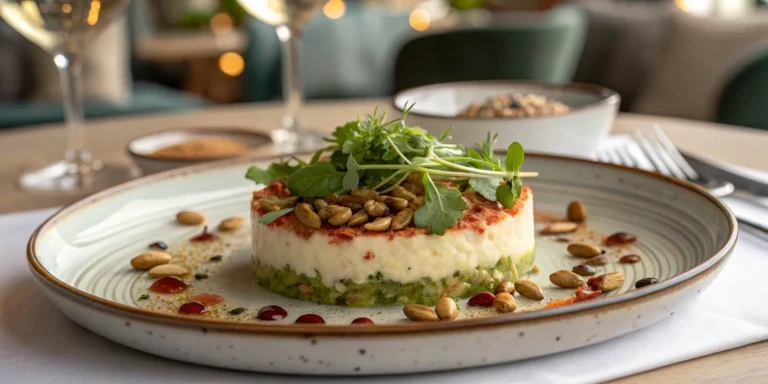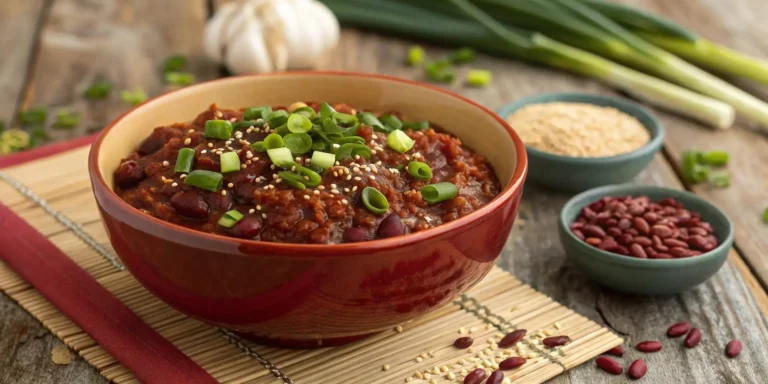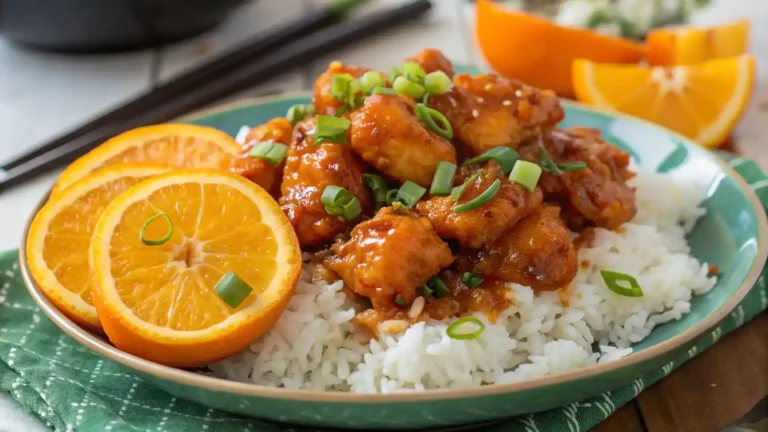Is Guyanese Food Spicy? A Complete Guide to Guyana’s Bold and Flavorful Cuisine
Guyanese cuisine is a vibrant fusion of African, Indian, Chinese, European, and Indigenous influences, creating a unique culinary experience. One of the most common questions people ask is, “Is Guyanese food spicy?” In this article, we’ll explore the flavors of Guyana, highlight the spiciness of its dishes, and provide you with a delicious recipe to try at home. Whether you’re a spice lover or prefer milder flavors, this guide will help you understand the heat levels in Guyanese food and how to enjoy it.
Table of Contents
- Introduction to Guyanese Cuisine
- Is Guyanese Food Spicy? Exploring Heat Levels in Guyanese Dishes
- Key Ingredients in Guyanese Cooking: What Makes It Unique?
- Popular Guyanese Dishes: Spice Levels and Flavor Profiles
- Recipe: Guyanese Chicken Curry – A Flavorful Delight
- Ingredients
- Step-by-Step Instructions
- Nutrition Information
- Tips for Adjusting Spice Levels in Guyanese Food
- The Cultural Significance of Spice in Guyanese Cuisine
- Health Benefits of Spices Used in Guyanese Cooking
- How to Source Authentic Guyanese Ingredients
- Pairing Guyanese Dishes with Beverages: Perfect Combinations
- Frequently Asked Questions About Guyanese Food
- Conclusion: Is Guyanese Food Spicy? The Final Verdict
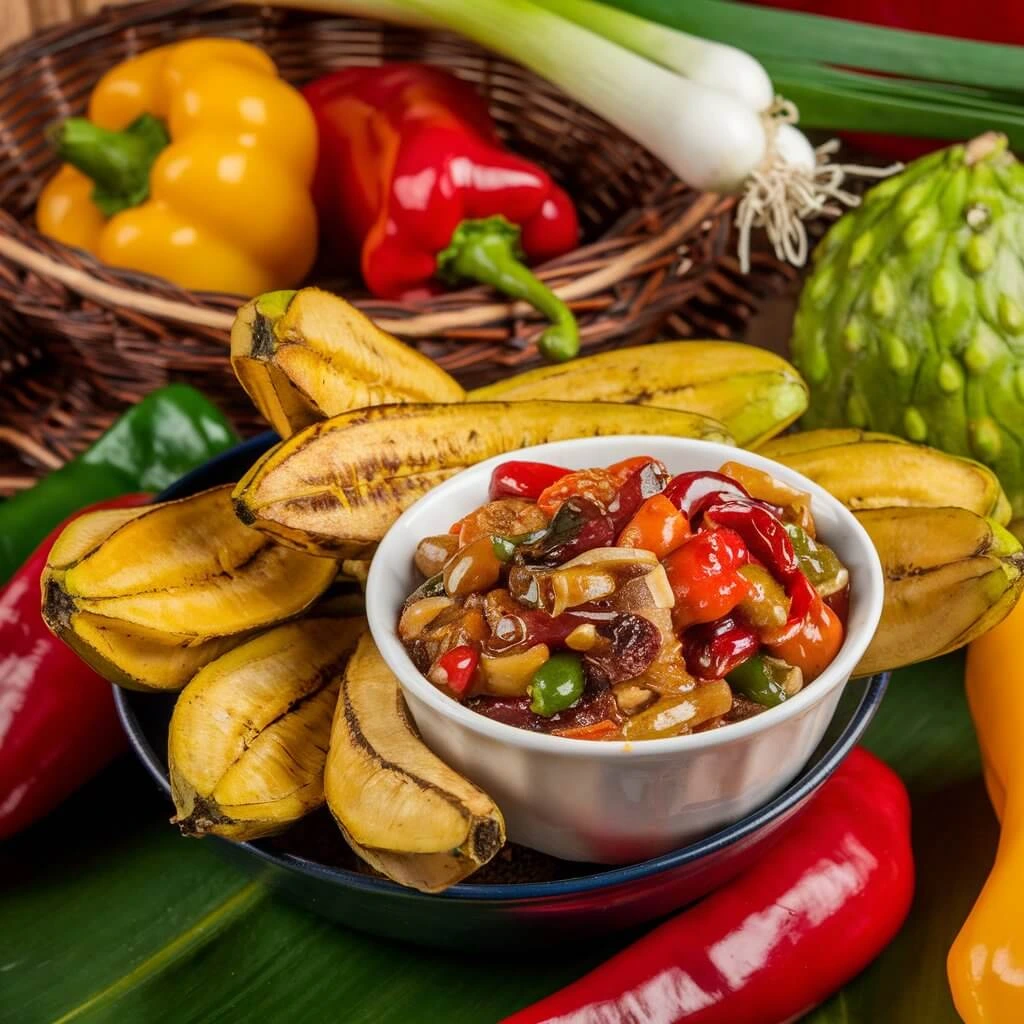
1. Introduction to Guyanese Cuisine
Guyanese cuisine is a vibrant fusion of African, Indian, Chinese, European, and Indigenous influences, creating a unique culinary experience. Located on the northern coast of South America, Guyana is often referred to as the “Land of Six Peoples,” and its food reflects this rich cultural diversity. From hearty stews to flavorful curries, Guyanese dishes are known for their bold and aromatic profiles. One of the most common questions people ask is, “Is Guyanese food spicy?” In this article, we’ll explore the flavors of Guyana, highlight the spiciness of its dishes, and provide you with a delicious recipe to try at home. Whether you’re a spice lover or prefer milder flavors, this guide will help you understand the heat levels in Guyanese food and how to enjoy it.
2. Is Guyanese Food Spicy? Exploring Heat Levels in Guyanese Dishes
The question, “Is Guyanese food spicy?” is one that many people ask when first encountering this vibrant cuisine. The answer depends on the dish and the cook’s preferences. While some Guyanese dishes are undeniably spicy, others focus more on aromatic spices rather than heat. For example, dishes like pepperpot and metemgee are more savory and rich, relying on ingredients like cassareep (a sauce made from cassava) and coconut milk for depth of flavor. On the other hand, dishes such as curry chicken or roti with curry can be made spicy with the addition of scotch bonnet peppers, cayenne pepper, or hot sauces. The beauty of Guyanese cuisine lies in its adaptability—cooks can easily adjust the spice level to suit their taste. So, while Guyanese food can be spicy, it doesn’t have to be, making it accessible to everyone, whether you’re a spice enthusiast or prefer milder flavors.
3. Key Ingredients in Guyanese Cooking: What Makes It Unique?
Guyanese cuisine relies on a variety of ingredients to create its signature flavors. Here are some of the most important ones:
- Scotch Bonnet Peppers: These are the primary source of heat in many dishes, but they are often used sparingly to avoid overwhelming the palate.
- Coconut Milk: Adds creaminess and balances spiciness, making it a key ingredient in dishes like curry and metemgee.
- Curry Powder: A blend of spices like turmeric, cumin, and coriander, which adds warmth and depth without excessive heat.
- Garlic and Ginger: Essential for adding depth and complexity to dishes.
- Fresh Herbs: Thyme, cilantro, and chadon beni (culantro) are widely used to enhance flavor.
These ingredients work together to create a harmonious balance of flavors, ensuring that Guyanese food is flavorful without being overly spicy unless desired.
4. Popular Guyanese Dishes: Spice Levels and Flavor Profiles
Here’s a breakdown of some popular Guyanese dishes and their typical spice levels:
- Pepperpot: A hearty stew made with cassareep and meat. It’s more savory than spicy, with a rich, tangy flavor.
- Curry Chicken: Can be spicy depending on the amount of chili used, but the heat can be adjusted to suit your taste.
- Cook-Up Rice: A one-pot dish with rice, beans, and meat. Usually mild, with a focus on aromatic spices.
- Metemgee: A coconut-based stew with dumplings and root vegetables. Mild to medium spice, with a creamy texture.
- Roti and Curry: The curry can range from mild to hot, depending on the recipe and the cook’s preference.
These dishes showcase the versatility of Guyanese cuisine, offering something for everyone, whether you enjoy a bit of heat or prefer milder flavors.
5. Recipe: Guyanese Chicken Curry – A Flavorful Delight
If you’re ready to try your hand at Guyanese cooking, this chicken curry recipe is a great place to start. It’s flavorful, aromatic, and can be adjusted to your preferred spice level.
Ingredients
- 2 lbs chicken (cut into pieces)
- 3 tbsp curry powder
- 1 scotch bonnet pepper (optional for heat)
- 1 onion (finely chopped)
- 3 garlic cloves (minced)
- 1-inch ginger (grated)
- 2 tbsp vegetable oil
- 1 cup coconut milk
- 2 cups water
- 1 tsp turmeric
- 1 tsp cumin
- Salt and pepper to taste
- Fresh cilantro (for garnish)
Step-by-Step Instructions
- Marinate the Chicken: In a bowl, mix the chicken with curry powder, turmeric, cumin, salt, and pepper. Let it marinate for at least 30 minutes.
- Sauté the Aromatics: Heat oil in a large pot. Add onions, garlic, and ginger, and sauté until fragrant.
- Cook the Chicken: Add the marinated chicken to the pot and cook until browned on all sides.
- Add Liquids: Pour in the coconut milk and water. Stir well and bring to a simmer.
- Simmer: Add the scotch bonnet pepper (if using) and let the curry simmer for 30-40 minutes until the chicken is tender.
- Garnish and Serve: Remove the scotch bonnet pepper, garnish with fresh cilantro, and serve with rice or roti.
Nutrition Information
Here’s the nutritional breakdown for one serving of Guyanese Chicken Curry (approximately 1 cup):
| Nutrient | Amount per Serving |
|---|---|
| Calories | 350 kcal |
| Protein | 25g |
| Carbohydrates | 10g |
| Fat | 20g |
| Fiber | 2g |
| Sodium | 400mg |
6. Tips for Adjusting Spice Levels in Guyanese Food
- For Milder Dishes: Reduce or omit scotch bonnet peppers and use less curry powder.
- For Spicier Dishes: Add extra chili peppers or a dash of hot sauce.
- Balance with Coconut Milk: Coconut milk can help mellow the heat in spicy dishes.
- Taste as You Go: Adjust spices gradually to achieve your desired flavor.
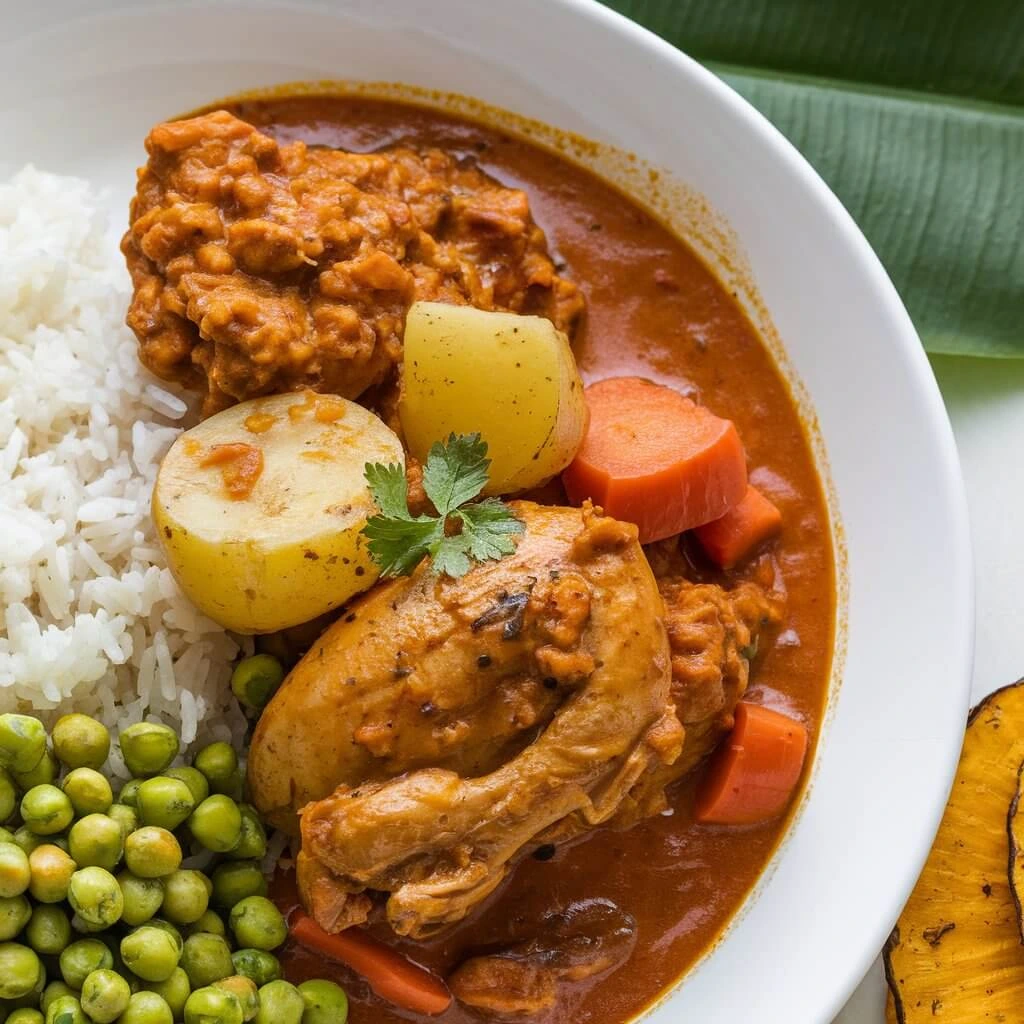
7. The Cultural Significance of Spice in Guyanese Cuisine
Spices play a crucial role in Guyanese cuisine, not just for their flavor but also for their cultural significance. The use of spices like curry powder, turmeric, and cayenne pepper reflects the country’s Indian and African heritage. These spices are often used in traditional dishes served during festivals and celebrations, symbolizing unity and diversity. For example, pepperpot is a staple during Christmas, while curry dishes are commonly enjoyed at family gatherings and special occasions. The adaptability of spice levels in Guyanese cooking also highlights the inclusive nature of the cuisine, allowing everyone to enjoy it regardless of their tolerance for heat.
8. Health Benefits of Spices Used in Guyanese Cooking
Many of the spices used in Guyanese cooking have significant health benefits:
- Turmeric: Known for its anti-inflammatory properties.
- Cumin: Aids in digestion and is rich in iron.
- Ginger: Helps with nausea and has anti-inflammatory effects.
- Garlic: Boosts the immune system and has antibacterial properties.
These spices not only enhance the flavor of Guyanese dishes but also contribute to overall health and well-being.
9. How to Source Authentic Guyanese Ingredients
Finding authentic Guyanese ingredients can be a challenge, especially if you don’t live near a Caribbean or South American market. Here are some tips:
- Online Retailers: Websites like Amazon and specialty food stores often carry Guyanese ingredients.
- Local Ethnic Markets: Check for Caribbean or Indian markets in your area.
- DIY Spice Blends: Make your own curry powder using turmeric, cumin, coriander, and fenugreek.
10. Pairing Guyanese Dishes with Beverages: Perfect Combinations
The right beverage can enhance your Guyanese dining experience. Here are some pairing suggestions:
- Pepperpot: Pair with a cold ginger beer to balance the richness.
- Curry Chicken: A refreshing limeade or coconut water complements the spices.
- Cook-Up Rice: Enjoy with a tropical fruit punch or sorrel drink.
11. Frequently Asked Questions About Guyanese Food
Q: Is Guyanese food similar to Indian food?
A: While there are similarities due to the Indian influence, Guyanese cuisine incorporates flavors from African, Chinese, and Indigenous cultures, making it unique.
Q: Can I make Guyanese food vegetarian?
A: Absolutely! Dishes like dhal puri (split pea flatbread) and vegetable curry are popular vegetarian options.
Q: What is the national dish of Guyana?
A: Pepperpot is often considered the national dish, traditionally served during Christmas.
12. Conclusion: Is Guyanese Food Spicy? The Final Verdict
So, is Guyanese food spicy? The answer is yes and no. While some dishes pack a punch, others are mild and focus on rich, aromatic flavors. The beauty of Guyanese cuisine lies in its versatility, allowing you to customize the spice level to suit your taste. Whether you’re a fan of fiery curries or prefer milder stews, there’s something for everyone in Guyanese cooking.
Try the Guyanese Chicken Curry recipe included in this article and experience the flavors of Guyana for yourself. Don’t forget to share your creations and let us know how you adjusted the spice levels to make it your own!

